
Peruvian Culture maintains a diversity of festivals and traditions that make up the cultural heritage. Peruvian holidays throughout the year lend color and flavor to our day-to-day, with celebrations that, between vibrant dances and acts of deep religious devotion, fill Peruvian life with passion and happiness.
There are 15 saints with processions each leaving their temple or church to make a visit to the Main Square of Cuzco and then enter the Basilica of the Cathedral, where they will remain for 8 days until "The Octave" arrives, the day on which the saints are taken out and taken to their temple or church of origin.
The Corpus Christi Catholic church celebration begins on Wednesday (one day before the procession or central day) with the departure of each saint from his temple of origin. Each one with a procession where the mayordomos or ¨Carguyoq¨ can be found, in some cases the mayor, the faithful who voluntarily decide to accompany their saint and accompanied by a band of musicians or ¨Q'aperos¨. After arriving at the Main Square, the statues of the saints are taken to the Cathedral and remain inside until the next day which is the procession. On Thursday all these people take their saint or virgin out of the Basilica of the Cathedral and the procession begins. The Main Square is full of people.
The Inca period witnessed the holding of many festivals that were dedicated to the worship of the ancestors and the gods. Apart from these occasions were also the festivals for Taita Inti, Killa, Kuychi, and others, all of which had a deep sense of their culture. The foremost of these was the sacrifice to the Inti, the Sun, when the former rulers' mummies were ceremonially paraded before the grand festivities.
The Spaniards, while observing the globe of these sophisticated ceremonies, came across an opportunity to spread Christianity during the festivities. In 1572, the procession of mummies was replaced with the celebration of the 15 saints and virgins, now called Cusquenian Corpus Christi, which symbolizes a big change in the religious observance.
The beginning of this festivity is on Wednesday (one day before the procession or central day) with the departure of each saint from his temple of origin. After arriving at the Plaza Mayor, the statues of the saints are taken to the Cathedral and remain inside until the next day which is the procession.
On Thursday, all these people take their saint or virgin out of the Basilica of the Cathedral and the procession begins. The Plaza Mayor is full of people. The order in which the saints come out is as follows:
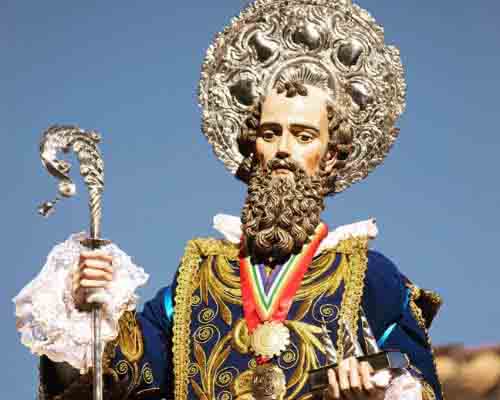 |
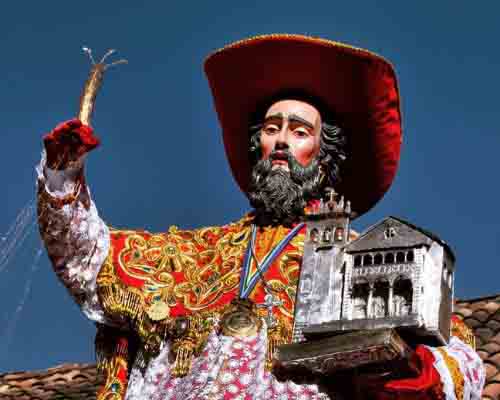 |
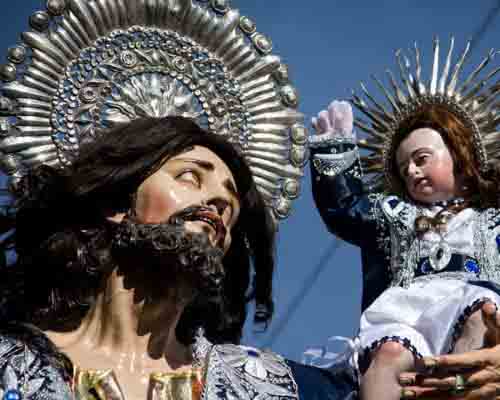 |
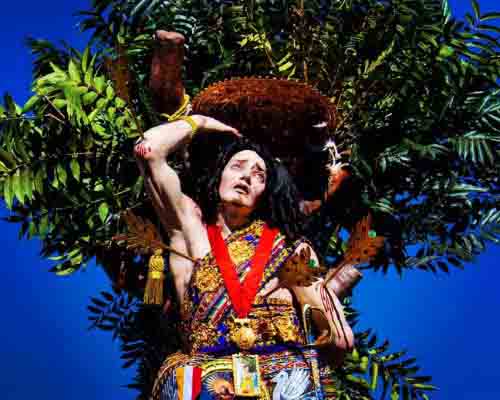 |
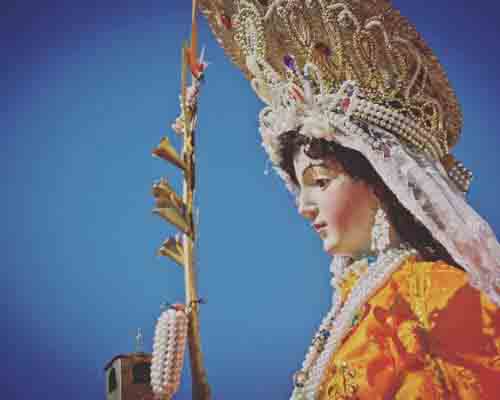 |
| 1. Saint Antonio | 2. Saint Jerónimo | 3. Saint Cristóbal | 4. Saint Sebastián | 5. Santa Bárbara Virgen |
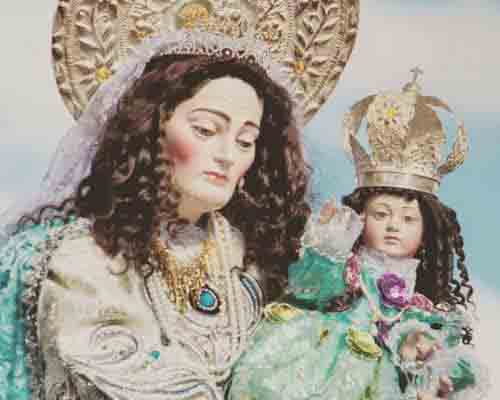 |
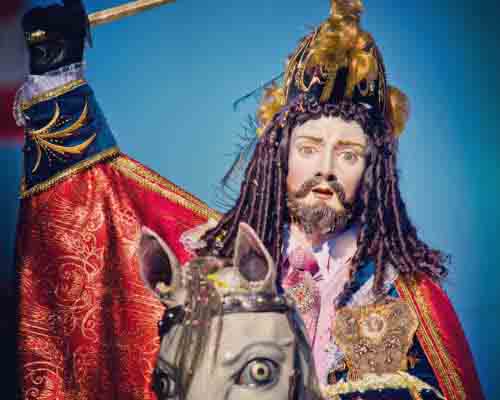 |
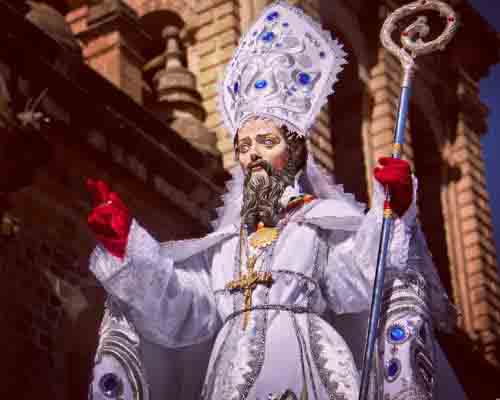 |
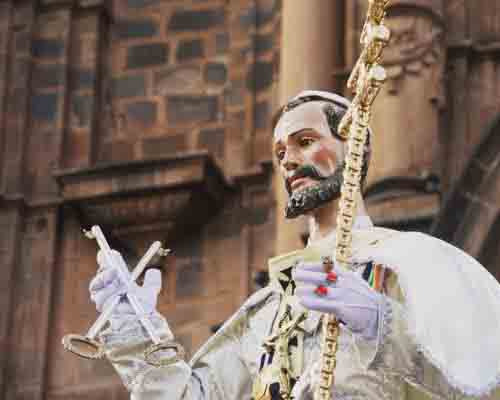 |
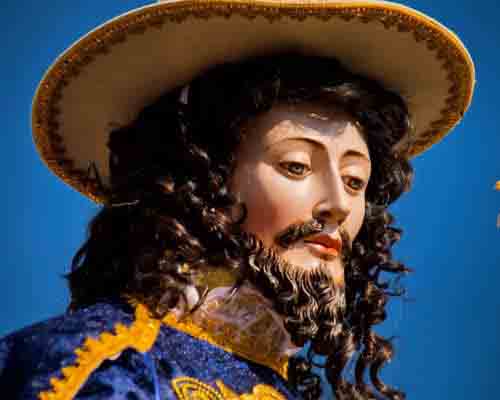 |
| 6. Santa Ana Virgen | 7. Saint Santiago | 8. Saint Blas | 9. Saint Pedro | 10. Saint José |
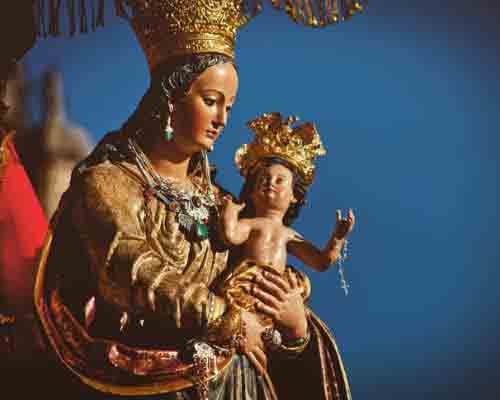 |
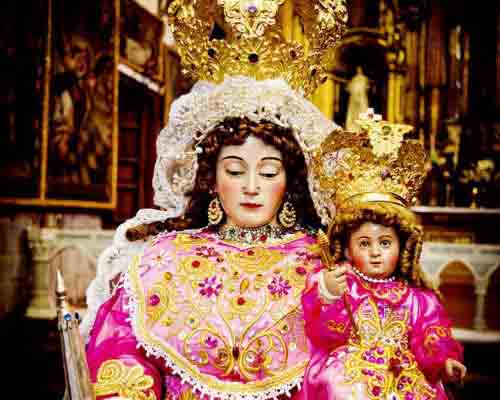 |
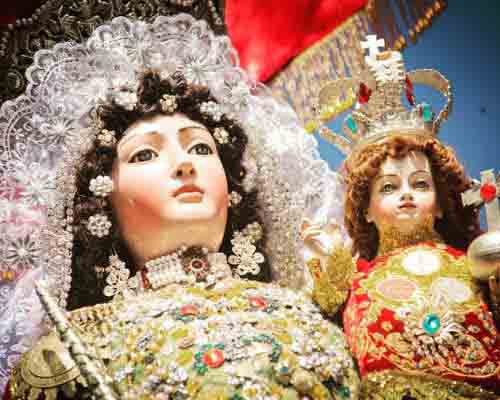 |
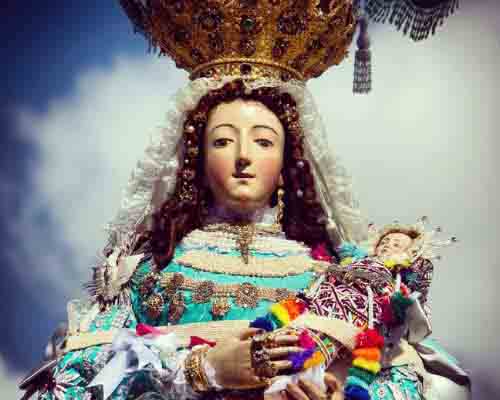 |
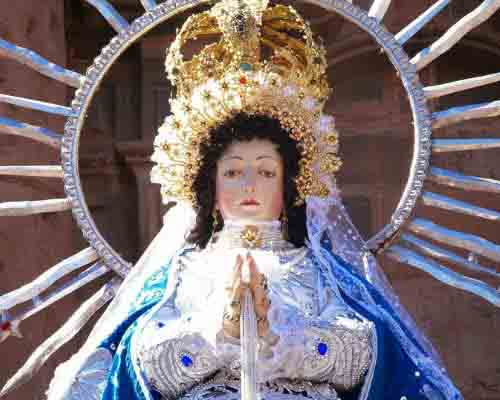 |
| 11. Natividad Virgen | 12. Remedios Virgen | 13. Purificada Virgen | 14. Belén Virgen | 15. Inmaculada Virgen |
It is the typical dish of these parties. Very difficult to find it at another time of the year. Throughout Cuzco, you can find the stalls with the striking whole cuys, some with their rocoto in the mouth. It is a very strong cold dish that brings: guinea pig, chicken, charki, homemade sausage, corn tortillas, cheese, corn, and cooked fish egg. The portion costs 25 soles.
Corpus Christi is a Catholic festival around the Eucharist that comes from medieval times and is celebrated in different ways in the world. In Cusco, it is celebrated with the procession around the parade ground of the holiest sacrament with ten saints and five virgins who then remain in the cathedral for eight days. On the eighth day, they return in procession to their respective churches. But what are the Inca roots? During the Inca period, before the Inti Raymi, the Incas took their sacred mummies (ancient sovereigns) to the main square of Cusco. The Spaniards replaced this custom with the images of saints and virgins.
The day before the procession in the Plaza de Armas we saw several dances that accompany the entrance of the saints and virgins to the cathedral.
It was the first time I witnessed a Mass in Spanish and Quechua, not only in the priest's speech but also in the songs. Listening to them, although I did not understand the lyrics, the melody and the tone of voice are very melancholic. I think there are few opportunities that these songs can be heard and are part of our musical heritage.
Corpus Christi does not have a fixed date in the year because it is celebrated 60 days after Resurrection Sunday (the day that depends on the lunar calendar) and it is always a Thursday day. It usually falls in June. On the web of EMUFEC (Municipal Company of Celebration of Cusco), they can check every year the dates of Corpus Christi and other festivities.
From the afternoon of the previous day (Wednesday) to the main date (Thursday) do not miss the dances on the parade ground while the saints come in comparsas to enter the cathedral.
Picture: Corpus Christi procession in Cusco
For the main day, on the Thursday of the procession, early in the morning (before 9 am) you will be able to see the saints and virgins at the entrance of the cathedral. A good point to take pictures before all the faithful begin to arrive. During the procession I recommend you to reserve a table on the balconies of any restaurant in the Plaza de Armas located on the second floor. From there you have a good view of the route of all the images.
In every procession, I am always surprised by the devotion of the people to their saints, especially the veneration of their images. Personally, it is difficult for me to venerate any representation or have devotion towards something or someone. Maybe because I am agnostic and I was raised in an atheist family. In any case, I can not deny that the celebration of Corpus Christi seems to be a very striking, joyful, and exciting celebration because of the fervor of the people.
The main dish of this festival is the Chiriuchu, a wonderful combination of the tastes for the most sophisticated food hobbyist. This dish boasts a symphony of ten ingredients: succulent baked guinea pig( its tend essence makes it to have a delicate texture and preserves its distinctive flavor), cau cau ( fish roe), tender boiled chicken, savory jerky, qochayuyo (seaweed), chorizo, hearty white corn, cheese, thinly sliced red pepper, and the quintess This torreja, the airy one, was made from a mixture of corn, pumpkin, and a little chicken broth during the making, giving it a tasty flavor when served.
The Octava days is when the 15 saints parade around the central plaza of Cusco, the heart of the city. Usually, the party starts after noon, around two in the afternoon, and ends by the time the clock strikes seven in the evening.
The festivities typically kick off the day following the Octava, with the 'lowering' denoting the reverent return of the sacred images to their respective churches or temples. However, certain protocols diverge, notably with Our Lady of Bethlehem.
Words fail to capture the fervor and exhilaration this celebration exudes. If you have the chance to journey to Cusco for these festivities, seize it without hesitation. And if a visit to the Citadel of Machu Picchu already lies within your plans and schedule, why not enhance your adventure with a journey aboard the PeruRail Vistadome train? Offering utmost comfort, it ensures your journey becomes an unparalleled experience. Secure your tickets here!
